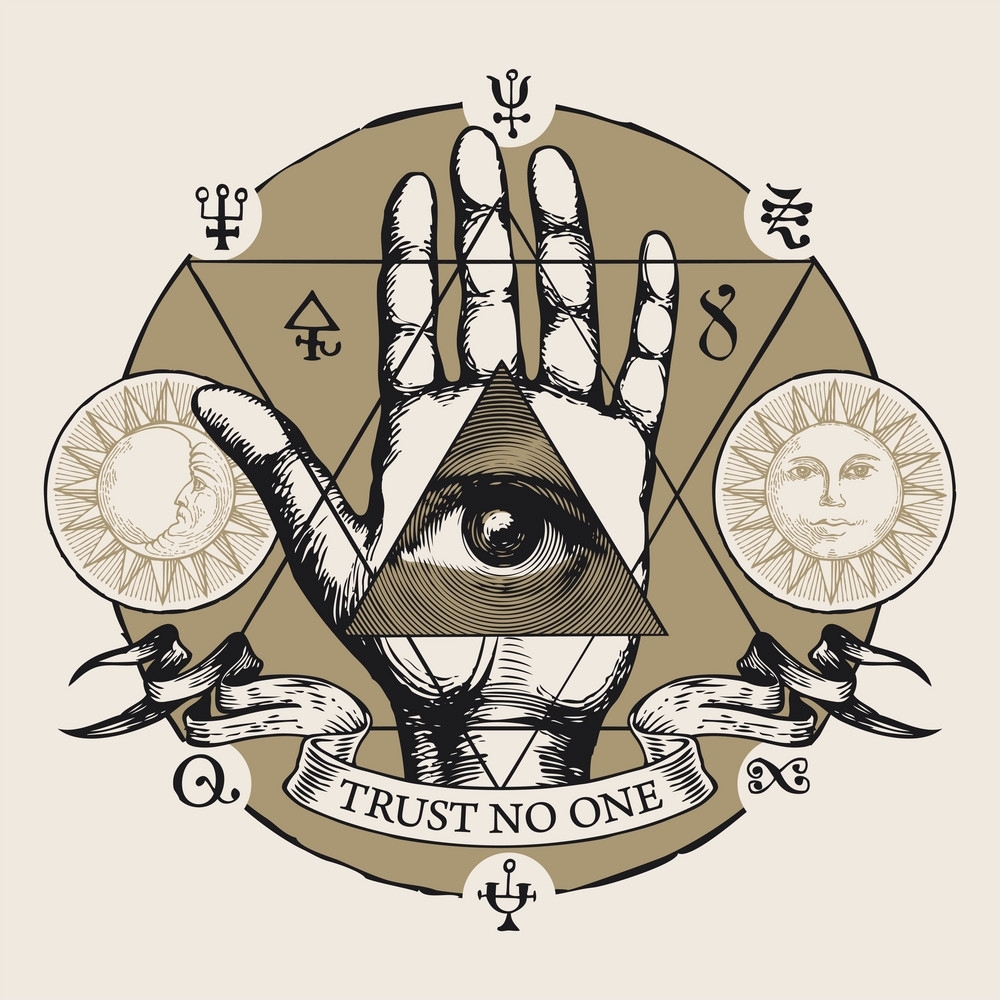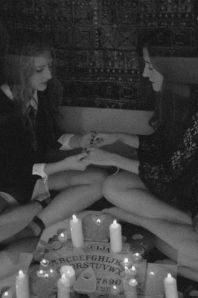“Almost since its invention in the late nineteenth century, the Ouija board has been associated with the threat of demon possession. Both experiences – the ouija ritual and deliverance – share a common structure and share so many elements that they must rely on a similar experiential mechanism. In both, the personality or personalities of those present appear to be overshadowed by alternate ‘selves,’ which often have horrifying stories to tell. This is not the say that the Ouija ritual and deliverance [from demon possession] are identical or equally significant; or that they always have the same form or origin; or that either is intrinsically good or evil.
… Further, we find that during the decade before the first ritual abuse narratives were elicited, a number of psychologists were experimenting with exorcism as a therapeutic technique for disturbed patients. The results of these experiments produced ‘memories’ that were as detailed and as compelling as the first SRA [Satanic Ritual Abuse] stories. Although the therapists found these memories often misleading and ultimately fictitious, their work provided an important link between the folk world of the Ouija, the theological world of the exorcism, and the secular world of satanic cult-hunting.
… Practically since its invention a century ago, mainstream Christian religions, including Catholicism, have warned against using Ouija boards, claiming that they are a means of dabbling with Satanism. Occultists, interestingly, are divided on the Ouija board’s value. Jane Roberts (1966) and Gina Covina (1979) express confidence that it is a device for positive transformation and they provide detailed instructions on how to use it to contact spirits and map the other world. But some occultists have echoed Christian warnings, cautioning inexperienced persons away from it. On the other hand, most adolescents consider the Ouija board as a party game, and most accounts describe nothing more than playful speculation about boyfriends and future events. Yet enough personal experience stories circulate that seem to validate the fears of adults: some teens do admit that evil spirits and even Satan himself take over the board. In fact, according to some such descriptions, adolescents deliberately invite demons to communicate through the Ouija board. Such contacts are followed by messages that threaten death, injury, and demonic possession, and the contact is capped by some physical manifestation that proves the demon’s power.
… Even seemingly benign and truthful messages must be diabolical in nature, Pedigo [Fundamentalist Jess Pedigo] adds, since “if there are only two sources of power who can reveal these hidden secrets and if God is not the power that moves … the planchette, it must, of necessity, be Satan.’
… A representative sample gathered from the traditions of teenagers in folklore archives in Ohio, Michigan, and Pennsylvania at first seems to confirm with evil image of the Ouija board. Violent, foul-speaking spirits frequently manifest, threatening to possess or harm the participants. And while some accounts describe trivial fortune-telling questions, some include the elements of sadistic sexual harassment. Nevertheless, it is also clear that they fit into a structured pattern. However improvised the ritual or board session may be, common narrative elements recur that fit it into a set of expectations. If ‘demons’ manifest, their presence is neither surprising nor uncontrollable. The following narrative seems to underlie the adolescent ‘success stories’ consulted:
1. The user invokes a spirit.
2. They then name the spirit and determine its background.
3. Participants test the spirit by asking it questions with known or knowable answers.
4. The messages take on a character of a dialogue between ‘spirit’ and the users, in which the ‘spirit’s’ contribution is less and less predictable.
5. The users confront the spirit, challenging its statements and demanding a sign of its reality.
6. The users terminate contact.… Once ‘contact’ has been made, users often begin, like exorcists, by asking for a name. One informant said that as soon as a spirit was contacted, they would ask if it was male or female, what it preferred to be called, when it had been alive, how old it was when it died, and similar questions about its past life. The answers determined what course the Ouija board session took. This process may be extended in follow-up questions that generate a history of the spirit’s past life. The archival accounts show that personalities tend to fall into one of two broad categories. One commonly found type of spirit, normally a ‘good’ one, is that of a small child or woman who has died in an accident. In many other cases, however, such ‘good’ spirits alternate with self-consciously evil ones. In addition to Satan and ‘the Devil’ himself, teens described contacting spirits who identified themselves as ‘Evil,’ ‘Legion,’ and ‘Mark a.k.a. Lucifer.’ In general, an ‘evil’ spirit signaled its presence by moving the indicator ‘the wrong way,’ or counterclockwise, or in ‘the Satan way … like a snake slither[ing]across the board.’ Obscene language also suggested evil spirits, as did refusing to spell out words like ‘God’ or ‘cross,’ except in unusual ways. One account that includes several of these elements came from an Ohio youngster:
‘Well, we kept saying that we wanted to talk to Satan ’cause everybody kept say, all the spirits kept saying that was who the power really came from. And we kept pushing for it. And the messengers kept saying, ‘Ya — you know you’re really going to be in trouble if you do. You’re really going to make him mad.’
So, finally, it like stopped, then it started, it, it moved in a snake [“S” movements with the hands], in a writhing kind of thing. And it went around the board writhing like that. And then it, it kept circling the ‘S’. And we asked who it was and finally it would say ‘Satan.’
And it wouldn’t spell, couldn’t spell ‘God.’ It would spell ‘G,’ then it would go to the alphabet to spell ‘G.’ But then it would go to the word ‘Good-bye’ to pick out the ‘o’ and then it would come back to the alphabet to get ‘D.’ It couldn’t use the letters out of the alphabet to spell ‘God’ or ‘cross’ or anything like that.’
… We could see the participants as double insulated from the ‘spirit’ messages by the Ouija ritual. First, since two persons normally move the indicator, it is impossible to say for certain which one might have consciously spelled out the words. Second, a successful ‘test’ and particularly an impressive sign both ‘prove’ that a supernatural entity outside of the two users is responsible for the communications.
… Overall, anti-occult crusaders and serious occultists see the device as a means of opening up a sustained and permanent link with the other world, for good or ill; but adolescents see it as part of a transient state to be approached, touched, then abandoned. The ‘fun’ of activities like these rely on participants’ faith that the trip they are taking through an alternate world that they have created has a secure starting point and a safe means of conclusion.”
– Bill Ellis, Raising the Devil: Satanism, New Religions, and the Media


